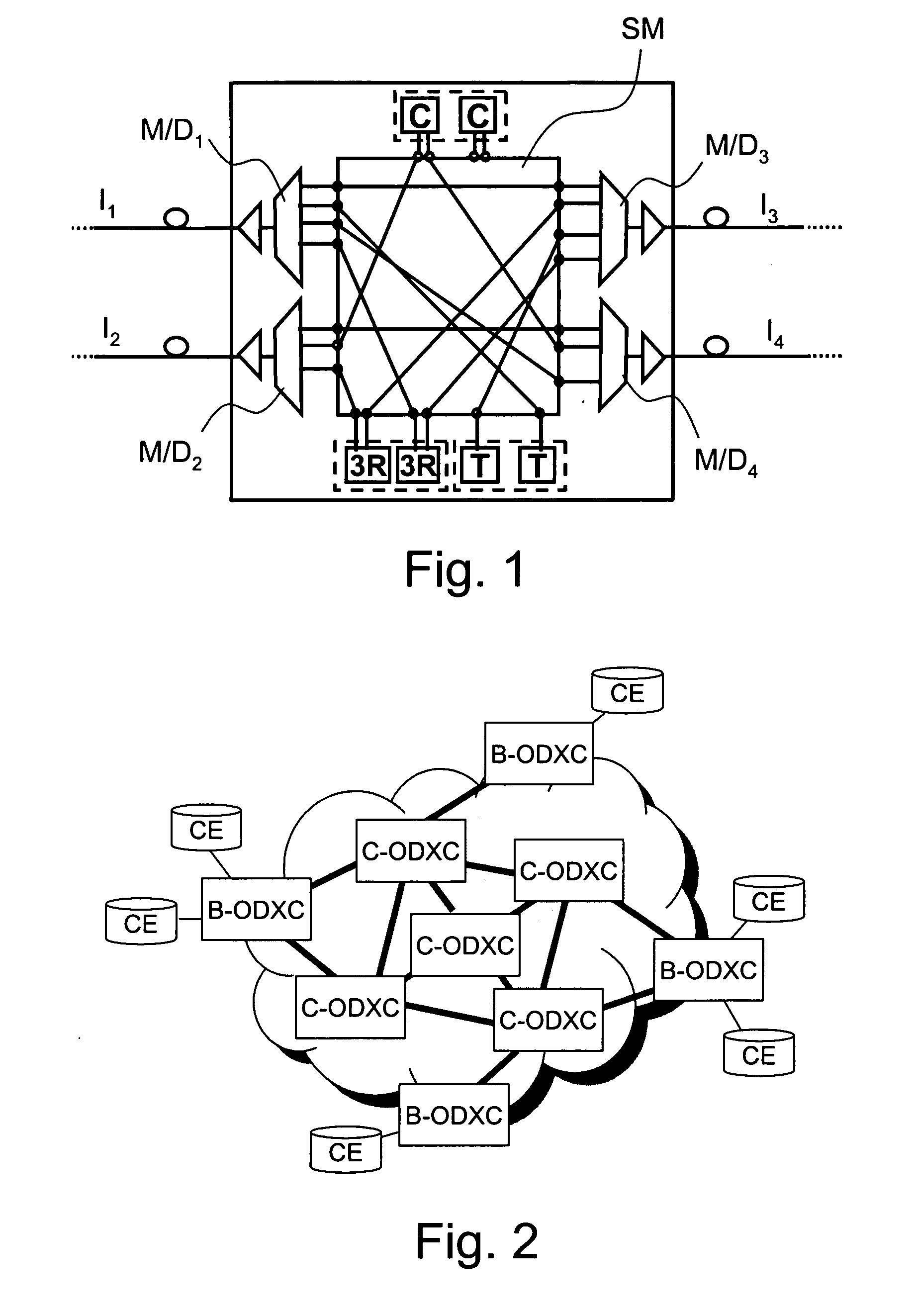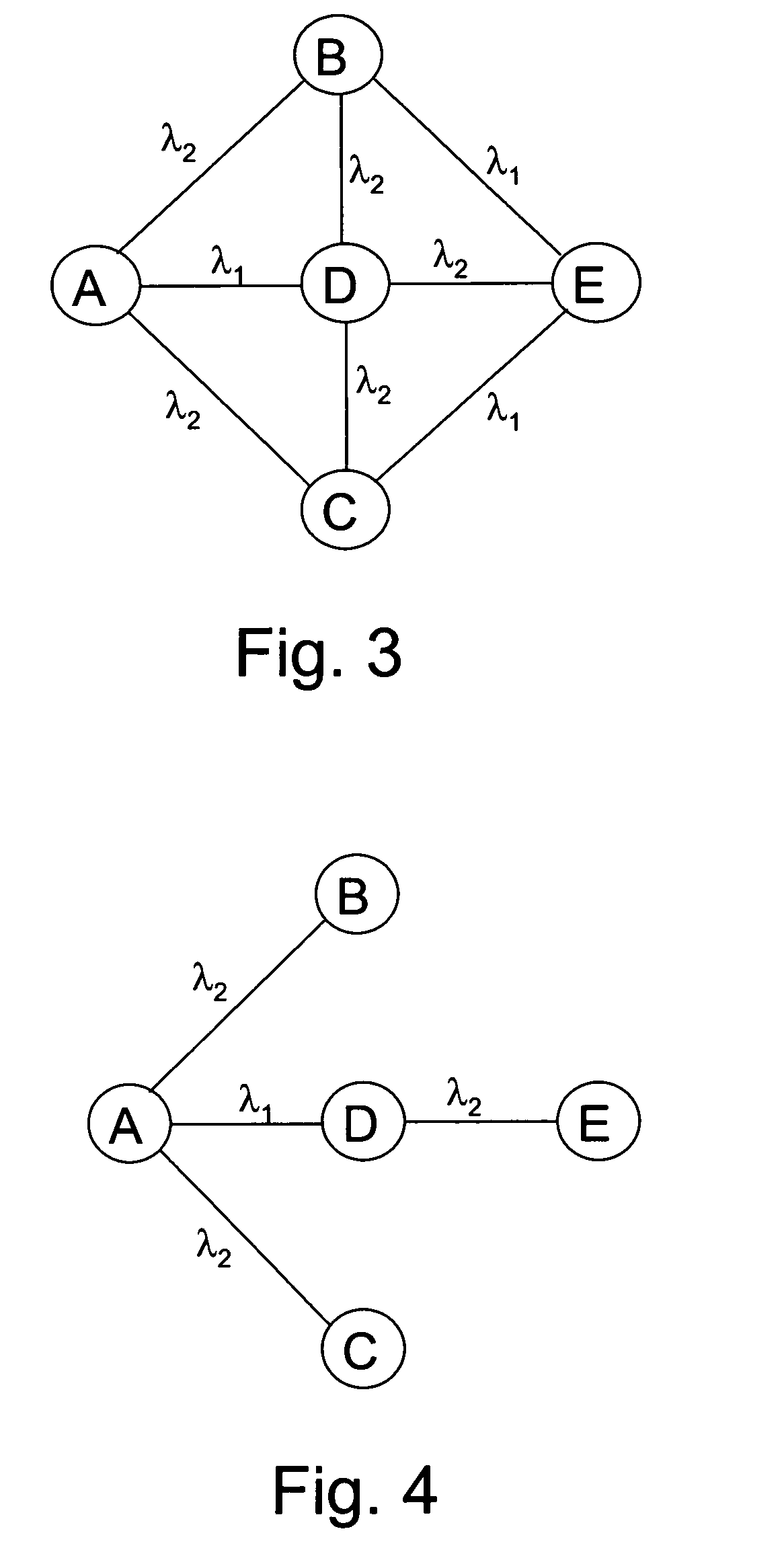Dynamic routing of optical signals in optical networks
a technology of optical networks and optical signals, applied in data switching networks, wavelength-division multiplex systems, multiplex communication, etc., can solve the problems of high blocking probability and inadequate transparent networks on a congested network, and achieve the effect of eliminating the availability of the only link and minimizing the risk
- Summary
- Abstract
- Description
- Claims
- Application Information
AI Technical Summary
Benefits of technology
Problems solved by technology
Method used
Image
Examples
Embodiment Construction
[0079]With reference to FIG. 8 it is shown the flowchart of the main steps of the method according to a preferred embodiment of the present invention.
[0080]The main phases of the method are the following:[0081]Creating a Routing Database (RDB) (block 100);[0082]Handling a routing request (block 200);[0083]Computing a route (block 300); and[0084]Optimizing resources along the computed route and assigning the wavelengths (block 400).
[0085]Block 100 provides for the creation of the necessary preliminary information for route searching. In particular, block 100 comprises the following phases:[0086]collecting the topological information of the network and the nodes description; and[0087]computing a vector (a set of ordered values) for each bundle of homogenous interfaces (i.e. interfaces with the same characteristics with respect to routing purposes, e.g. TE-links) deployed in the network, the vector's elements quantifying the degradation that the optical signal undergoes in travelling o...
PUM
 Login to View More
Login to View More Abstract
Description
Claims
Application Information
 Login to View More
Login to View More - R&D
- Intellectual Property
- Life Sciences
- Materials
- Tech Scout
- Unparalleled Data Quality
- Higher Quality Content
- 60% Fewer Hallucinations
Browse by: Latest US Patents, China's latest patents, Technical Efficacy Thesaurus, Application Domain, Technology Topic, Popular Technical Reports.
© 2025 PatSnap. All rights reserved.Legal|Privacy policy|Modern Slavery Act Transparency Statement|Sitemap|About US| Contact US: help@patsnap.com



